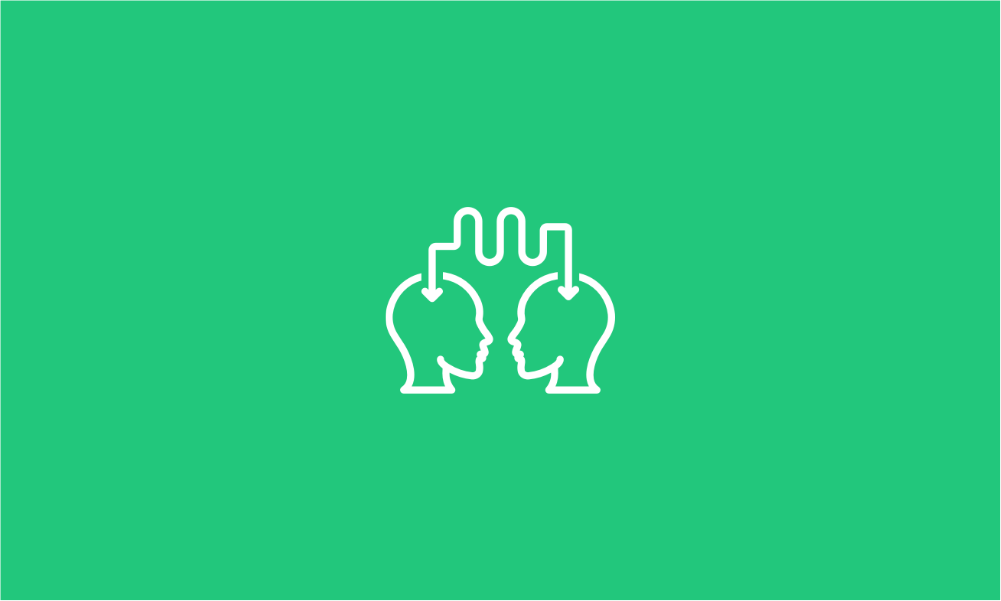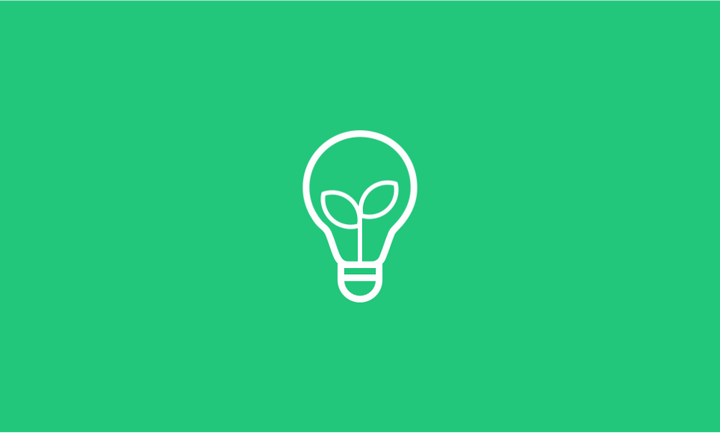How Tools Created Modern Humans
A brief history of how tools enabled our current version of humanity.

To understand how we can create tools for humanity, it’s helpful to understand the history of how tools have created the humans we are today. Also, let’s address some vocabulary before we dig in. A tool is “a device that aids in accomplishing a task” and humanity is “the quality or condition of being human”. Therefore, a tool for humanity is a device that helps a human to be more human - to be healthy, happy, and authentic. The tools humans have made have shaped modern humans, and the tools we make today will shape the humans of tomorrow.

Tools Shaped Modern Humans
Humans have a rich tradition of making tools that enable them to do things they couldn’t otherwise accomplish individually or collectively. Indeed, inventing and using tools sets humans apart from other species which we can see from our human-dominated world. As humans, Neuroplasticity is the ability of our brains to adapt in ways that enable us to create and use tools. Early tools such as language and writing enabled our brains to adapt to symbolic abstraction, enabling new types of thinking and cognition beyond just raw perception. For example, a wolf is no longer just a thing you see in the present moment but also a concept - four legs, furry, teeth, danger, and doesn’t like fire. And since humans can only hold around seven distinct pieces of information in active memory, this assisted cognition in the form of abstractions enabled those seven pieces of information to represent much richer, more complex ideas.
Abstractions also enable humans to think about things not occurring in the present moment. Before abstractions, humans perceived what was happening in the present moment. A wolf was either present or not present. But with abstractions, humans could conceive a wolf conceptually without a wolf being present. Language and writing also enabled further abstraction, such as the sharing of ideas and collective thinking and memory. For example, a parent could teach their child about wolves without the child ever having seen a wolf.
Tools such as the printing press enabled humans to scale the reach and impact of ideas, crossing boundaries of geography and time. Humans could suddenly learn from people that lived 1000 years ago or quickly share new ideas and enable collective organization. For example, a farmer could share a proven method for increasing crop yields which could be applied by farmers around the world. Tools such as the scientific method assisted cognition by providing more structured ways of thinking and analysis, promoting ideas that proved more effective. Combined with the printing press and written language, the scientific method enabled the rapid refinement of ideas, which enabled a collective body of knowledge to develop. These tools enabled humans to remember that knowledge across the barrier of time, being able to preserve knowledge beyond and build upon the knowledge of previous generations without starting over.
Humans also created tools for increasingly complex cognition. Over time, thinking evolved from thinking to thinking about thinking. As an example, consider when an idea pops into your brain “I think I want to do a thing.” And then you think “Why do I want to do that thing?” or “Do I really want to do that thing?”. And then you think “Why am I always thinking about thinking?”. As you might observe there are upsides and downsides to our advanced metacognition skills. Meditation arguably exists to be able to interrupt and observe runaway thoughts, regaining control of our thinking.
More recently, the tools of computing and the Internet have enabled humans to think in even more abstract ways and more rapidly share those thoughts with people across the world in real time. This has enabled new forms of assisted cognition (ex. a journal with AI-powered prompts, collective thinking (ex. Wikipedia), and collective decision-making (ex. crowdsourcing solutions via Twitter). And undoubtedly, there are many more tools to come. Perhaps the question isn’t so much what will these tools be, but rather what tools do we need to support ourselves individually and connectively? Before we explore that question further, let’s explore some of the side efforts of our tools for assisted cognition.

The Side Effects of Assisted Cognition
To maintain and build upon our current level of knowledge, humans created tools for remembering and sharing knowledge to future generations. While children may be born with some default wiring and biological systems for interacting with the world and other people, humans have created processes for transmitting accumulated knowledge to children through many approaches including parenting, religion, compulsory education, books, stories, cliches, etc. Thus, as children and young adults, we learn information and knowledge that are a byproduct of our parents and the place and culture in which we grow up. This borrowed philosophy certainly bootstraps us far beyond our natural capabilities at birth, but if we don’t substitute our own intrinsic point of view it will be the philosophy that guides us for the rest of our lives.
Humans have arguably made great strides in having more humane and effective shared philosophies over time. We’re no longer living in a time where most people die young or where having the wrong religion or philosophy is likely to get you killed. However, human greed has tainted many of our adopted philosophies to benefit those in power. And the voices of ghosts from our past keep some outdated philosophies alive that are no longer effective in our modern world.
As an example, the philosophy of capitalism has arguably led to great advances in humanity but has also led to the unintended consequences of the religion of consumerism which many people use as a guide for their life and as a measure of their success. As the science of happiness has shown, happiness from consumerism is fleeting. And consumerism relies on extrinsic definitions from companies and influencers which are unachievable for most people and thus likely to cause unhappiness.
Similarly, the outdated voices of ghosts from the past still haunt us. As an example, compulsory education is still largely based on talk and recall methods of learning based on the assumption that people learn from osmosis. A lot has been learned about how people learn and how to apply instructional design to create more effective and efficient learning experiences. And while that knowledge has impacted many educational institutions, there’s still a large gap. Many schools still use this method of teaching and testing for retention or comprehension instead of analysis, application, and creation of learned information and knowledge. Not all borrowed philosophy is a good philosophy.
Reliance on a borrowed philosophy often causes dissonance. Many people encounter friction between their evolving self and their external philosophy. As a person grows up and has their own life experience, they may find that the borrowed philosophy of their parents or society doesn’t corroborate with their lived experience or who they are as a person. For example, perhaps a parent values artistic experimentation, whereas a child values scientific experimentation. Or another example is perhaps a society values hard work above all else where as a young adult finds equal value in work and play. The problem is that dissonance occurs between the external philosophy and the person’s developing philosophy. And if unresolved, dissonance can lead to a lot of unhappiness.
There are two paths to choose - following a borrowed philosophy or choosing one’s own personal philosophy. This second option, clarifying and living one’s own personal philosophy has a key difference. It’s an intrinsically defined philosophy. A borrowed philosophy has a reliance on the external judgment of other people, systems, and rules. Whereas a personal philosophy is defined - and likely refined many times - by each person. If a person is reliant on extrinsic judgment, there’s likely going to be a lot of dissonance over a lifetime since other people will have different philosophies and perhaps not be acting with benevolence. But if a person is relying on intrinsic judgment, the only dissonance that can exist is between your philosophy and how you’re actually living your life. And each person is empowered to change that through their decisions and actions. This is good dissonance, as the equilibrium-seeking tendency of humans causes alignment between personal philosophy and action. Living according to a personal philosophy is like going from the passenger to the driver of one’s life.
Living a happy life therefore often requires people to go beyond borrowed philosophies to find their own personal philosophy, even if it’s just having the wisdom to return to and accept their borrowed philosophy based on lived experience. There is, after all, often a need to “learn and know for one’s self”. But often, one’s personal philosophy turns out to be a combination of one’s borrowed philosophy combined with new ideas, information, knowledge, and wisdom. And now we return to the question, how does one clarify their personal philosophy?

Tools For Happiness
There is power in the tools created by humans. These tools are superpowers that create assisted cognitive abilities that otherwise wouldn’t be possible. We these powers we can help ourselves be happier and help other people also have more happiness in their lives. If tools like language, writing, or computing suddenly didn’t exist, the humans we are today would no longer exist. These tools are literally extensions of who we are and how we function in the world.
Research has shown that those who achieve mastery in anything have strong mental models which enable them to achieve increasing levels of mastery. Therefore, to achieve mastery of happiness, I believe it is necessary to have strong mental models of what makes a person happy and what makes a person unhappy. Some of these tools are adopted by other people and some of these tools we invent for ourselves.
This may seem like an abstract and academic way of thinking. “Who cares about tools?” you might ask. Reading books is just fun. I just like hanging out with my friends. But I think there’s power in understanding the Whys behind these tools and how to apply them in intentional ways that lead to wellness and happiness. In fact, having stronger mental model of mental models enables people to create and use tools by understanding that tools can be created, structured, changed, applied, etc. And having a deeper understanding of why certain tools are more effective than others enables the underlying mechanics to be observed and applied to improve existing tools and create new tools. For people making tools for humanity, stronger mental models lead to more effective and efficient tools for humanity. And luckily there are tools that have already been created that help with clarifying one’s personal philosophy.

Tools For Humanity
Many of the tools humans initially created enabled them to survive. These tools enabled eating, reproduction, protection, shelter, etc. Similar to Maslow’s Hierarchy of Needs, people needed to be able to survive before they had time or energy to deal with belonging, self-esteem, or self-actualization. More recently, humans have used their tools and knowledge to enable more people to have the foundations prescribed in Maslow’s hierarchy. Today more people have more food, shelter, health, safety, and employment than that any other time in history. That’s not to say there’s not a lot of suffering remaining in the world. More people today have a chance to have more happiness, having more time than ever before to focus on love and belonging, esteem, and self-actualization. But we need new tools to help more people achieve those potential levels of happiness. Some of those tools already exist and likely many more need to be created or improved.
As an example, mindfulness is a tool for being present in the current moment and noticing thoughts, feelings, smells, sounds, etc, which can be a useful tool to notice what’s happening, take a step back, and observe it. This is powerful because it enables a new type of thinking. Instead of just thinking, a person can think about what they’re thinking about. A person can take a step back from thought and think about it without being it. For example, noticing a thought such as “Why am I so anxious right now?” can lead to identifying what’s causing anxiety and identifying options to reduce it if desired. This also illustrates metacognition, which is a set of tools for thinking about thinking. In the previous example, after noticing the thought, metacognition is asking questions about it such as “Why am I so anxious right now?”, “What options do I have to reduce my anxiety?”, and “Do I want to try one of those options?” which can be valuable skills for having more wellness and happiness. This is an example of self-efficacy, which is the ability of a person to produce a desired or intended result they want to achieve. And it’s an example of how tools can help humans do things they couldn’t otherwise do.
These aren’t the only tools for wellness and happiness. Just visit a bookstore or search the Internet to find 1000s of ideas, practices, and mental models for wellness, happiness, and self-efficacy. These can be helpful tools, but they’re often just ideas. Ideas often lack the essential implementation to make them effective. They often require a lot of work to understand and apply, and often lack the components necessary for effective learning and change. Lasting learning requires understanding, application, evaluation, and expression. And lasting change requires repetition, motivation, feedback, accountability, and reflection. Doing all of that yourself is hard. That’s why there are teachers, coaches, mentors, etc. But there’s a new option these days, the power of computing and the Internet.
But computing and the Internet are almost magical tools for creating intentional experiences for learning and growth. These mediums are seemingly boundless in what they can create and do. Apps can structure learning to address understanding, application, evaluation, and expression and the Internet can connect people to create shared learning and growth experiences. They can also help to structure the motivation, feedback, accountability, and reflection needed to form habits and cause lasting change. Apps can also scale what’s working to almost everyone in the world in almost real-time at minimal costs compared to labor-intensive approaches.
Instead of a self-help book that tells a person how to clarify their own personal philosophy and then leaves them to do it on their own, a person can have an app that facilities clarifying personal philosophy and connects people together to help you along the way.
That’s why I’m excited about building tools for humanity.



Comments ()